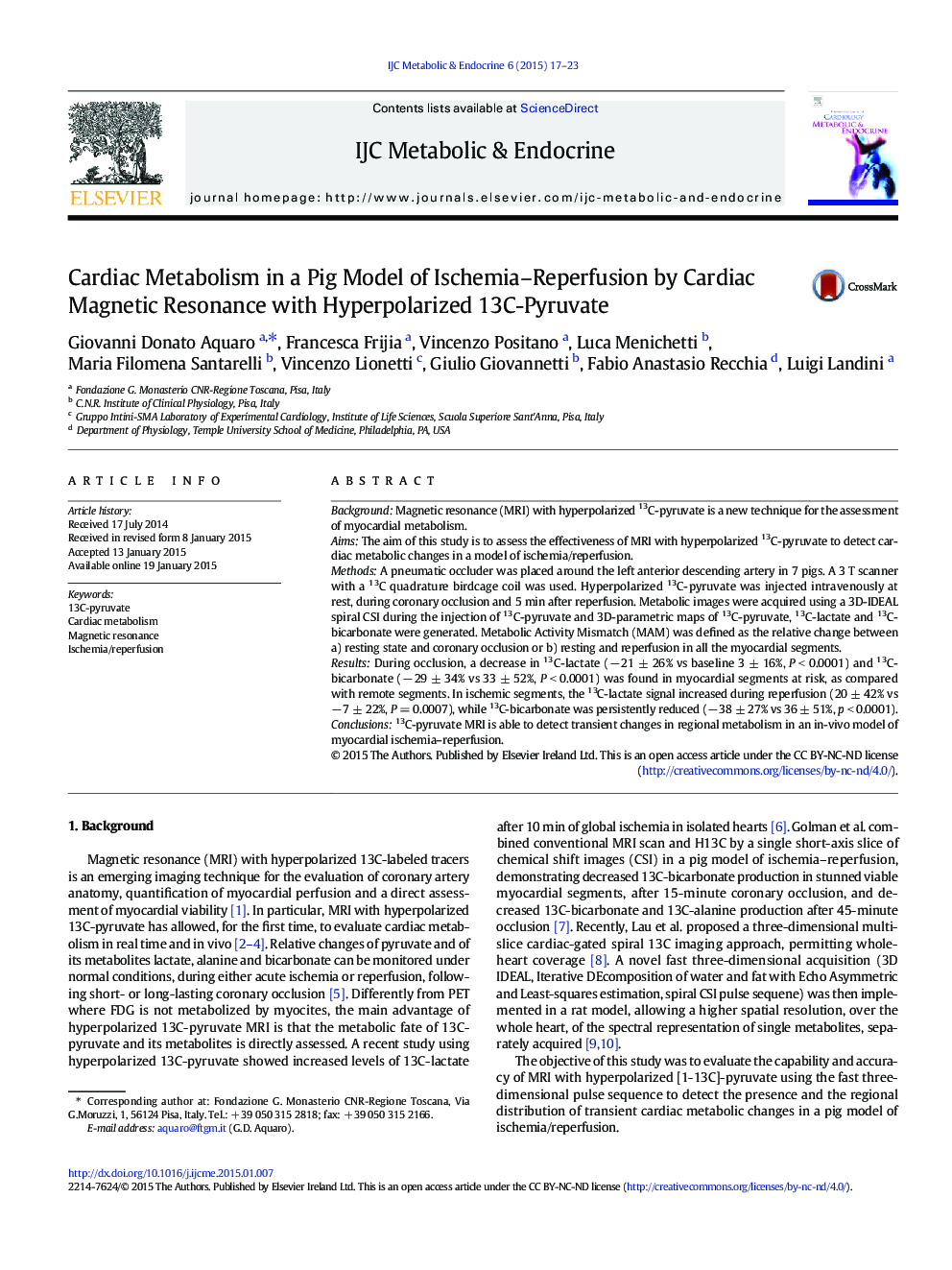| Article ID | Journal | Published Year | Pages | File Type |
|---|---|---|---|---|
| 2927206 | IJC Metabolic & Endocrine | 2015 | 7 Pages |
BackgroundMagnetic resonance (MRI) with hyperpolarized 13C-pyruvate is a new technique for the assessment of myocardial metabolism.AimsThe aim of this study is to assess the effectiveness of MRI with hyperpolarized 13C-pyruvate to detect cardiac metabolic changes in a model of ischemia/reperfusion.MethodsA pneumatic occluder was placed around the left anterior descending artery in 7 pigs. A 3 T scanner with a 13C quadrature birdcage coil was used. Hyperpolarized 13C-pyruvate was injected intravenously at rest, during coronary occlusion and 5 min after reperfusion. Metabolic images were acquired using a 3D-IDEAL spiral CSI during the injection of 13C-pyruvate and 3D-parametric maps of 13C-pyruvate, 13C-lactate and 13C-bicarbonate were generated. Metabolic Activity Mismatch (MAM) was defined as the relative change between a) resting state and coronary occlusion or b) resting and reperfusion in all the myocardial segments.ResultsDuring occlusion, a decrease in 13C-lactate (− 21 ± 26% vs baseline 3 ± 16%, P < 0.0001) and 13C-bicarbonate (− 29 ± 34% vs 33 ± 52%, P < 0.0001) was found in myocardial segments at risk, as compared with remote segments. In ischemic segments, the 13C-lactate signal increased during reperfusion (20 ± 42% vs − 7 ± 22%, P = 0.0007), while 13C-bicarbonate was persistently reduced (− 38 ± 27% vs 36 ± 51%, p < 0.0001).Conclusions13C-pyruvate MRI is able to detect transient changes in regional metabolism in an in-vivo model of myocardial ischemia–reperfusion.
